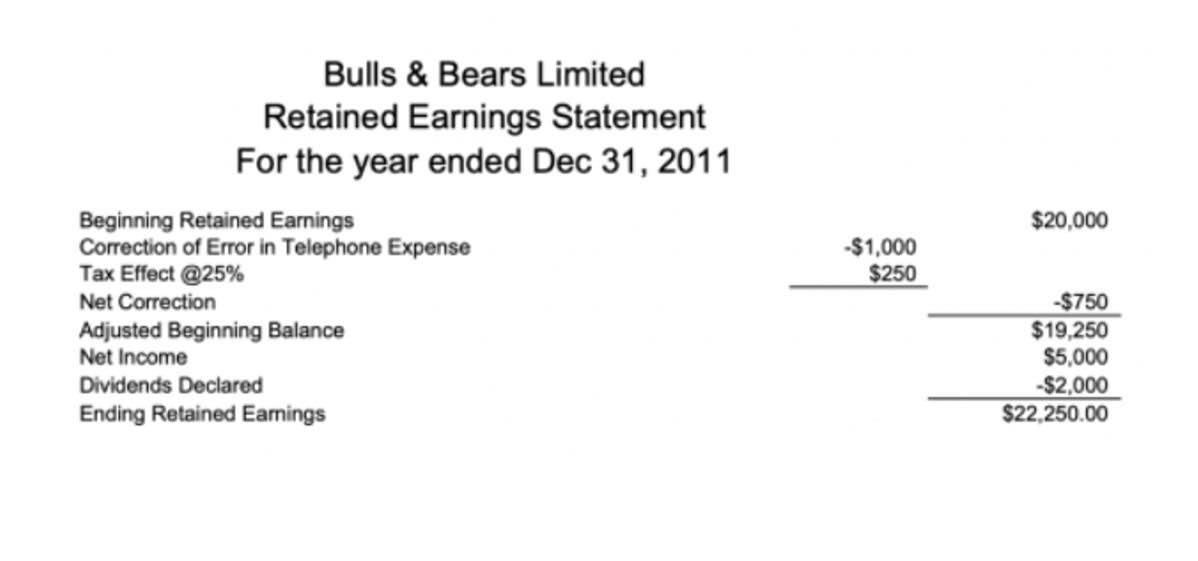The company uses this account when it reports sales of goods, generally under cost of goods sold in the income statement. The remaining profit after the distribution is reinvested in the business or is set aside as a reserve for a specific purpose such as the expansion of the business or repayment of debt. These programs are designed to assist small businesses with creating financial statements, including retained earnings. First, revenue refers to the total amount of money generated by a company. It is a key indicator of a company’s ability to generate sales and it’s reported before deducting any expenses. Retained earnings are reported in the shareholders’ equity section of a balance sheet.
Ex. 上記の次期の Revenue は $4,000 で、Expense は $5,420 であった。
Long-term « buy and hold » investors may wish to see that money reinvested in the company. Retained earnings represent a company’s accumulated profits or losses. However, it also subtracts dividends paid to shareholders in the past first. Overall, retained earnings include all profits or losses a company has made since the beginning. Over time, as companies accumulate profits they must record them on the balance sheet as a balance. Funds raised through equity do not require to be paid off later https://www.bookstime.com/ but the stake of the company is relinquished from the owners to more shareholders through shares.
How Net Income Impacts Retained Earnings
In other words, retained earnings is the amount of earnings that the stockholders are leaving in the corporation to be reinvested. Understanding how to calculate retained earnings and net income provides a clearer picture of a company’s financial performance and strategic decisions, helping stakeholders make informed decisions. While assets and liabilities are not directly used to calculate retained earnings, understanding their role helps clarify their impact on equity. If the company had not retained this money and instead taken an interest-bearing loan, the value generated would have been less due to the outgoing interest payment.
Account
Retained earnings, although an important financial metric, do not represent a specific asset that can be readily converted is retained earnings a current asset into cash or used to generate revenue in the short term. By reinvesting earnings, you’re fueling business growth and potential future profitability. This move could boost your company’s stock price, rewarding your shareholders with long-term appreciation. On the other hand, distributing earnings as dividends offers shareholders an immediate, tangible return on their investment, which may increase their perceived value. A consistent increase in retained earnings could indicate that your business is managing its finances well and is capable of making healthy profits.
- To calculate RE, the beginning RE balance is added to the net income or reduced by a net loss and then dividend payouts are subtracted.
- Paying off high-interest debt also may be preferred by both management and shareholders, instead of dividend payments.
- They’re like a link between your income statement (aka your profile and loss statement) and your balance sheet.
- Due to its definition, some people may confuse retained earnings for current liabilities or assets.
- It also indicates that a company has more funds to reinvest back into the future growth of the business.
- The specific use of retained earnings depends on the company’s financial goals.
Traders who look for short-term gains may also prefer dividend payments that offer instant gains. Knowledge about the dynamics and details of retained earnings can be a powerful tool for strategic decision-making. But, like most components of financial statements, you shouldn’t analyze retained earnings on their own.
- Retained earnings are recorded under shareholders’ equity, showing how these earnings can be used as a tool to generate growth.
- Then, subtract any dividends you gave out this year, or $20,000 in this scenario.
- Any profits that are not distributed at the end of the LLC’s tax year are considered retained earnings.
- If you don’t pay dividends, you can ignore this part and substitute $0 for this portion of the retained earnings formula.
- A good understanding of retained earnings will help you make sense of your balance sheet and enable informed decision-making and sustained growth for your business.
- Similarly, any of these obligations that companies must repay within 12 months are current liabilities.
Retained earnings are not assets but they can be used to acquire the assets and they are classed as shareholder’s equity. This formula rearranges the retained earnings calculation to isolate net income. Retained earnings is not classified as a current asset in accounting. As an AI language model, I don’t have personal experiences or situations to share, but I can provide you with a detailed answer. Before discussing where retained earnings fall on the balance sheet, it is crucial to understand what they are. It is easier to understand what retained earnings are after defining them.
In a corporation, the earnings of a company are kept or retained and are not paid directly to owners. In a sole proprietorship, the earnings are immediately available to the business owner unless the owner decides to keep the money for the business. It can reinvest this money into the business for expansion, operating expenses, research and development, acquisitions, launching new products, and more. The specific use of retained earnings depends on the company’s financial goals. Ultimately, the company’s management and board of directors decides how to use retained earnings. If a company decides not to pay dividends, and instead keeps all of its profits for internal use, then the retained CARES Act earnings balance increases by the full amount of net income, also called net profit.
Retained earnings also act as an internal source of finance for most companies. (No offense, accountants.)Essentially, it’s the total income left over after you’ve deducted your business expenses from total revenue or sales. You can find it on your income statement, also known as profit and loss statement. Evaluating the impact of retained earnings on your business is a matter of careful observation and analysis and should always play a critical role in your financial reporting.
It illustrates how much profits over all the years since inception were generated from $1 of total assets. This ratio also gives the company an idea of how much it relies on debt for the funding of its total assets. A Limited Liability Company, referred to as an LLC, is a type of corporate structure where individual shareholders are not personally liable for the company’s debts. Like in a general partnership, profits of an LLC are generally distributed to the shareholders. Any profits that are not distributed at the end of the LLC’s tax year are considered retained earnings. Undistributed profit is shown in the books as retained earnings.







Laisser un commentaire